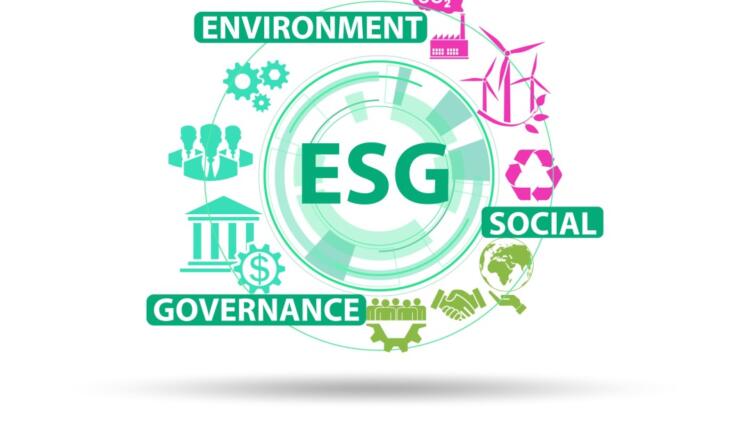
We are entering unprecedented times with the world’s climate undergoing drastic change. Rising temperatures, melting ice caps and extreme weather events are becoming all too frequent. Scientists are warning that to prevent catastrophic events, we must limit global warming to well below 2 degrees Celsius above pre-industrial levels with efforts to keep it within 1.5 degrees. Achieving these targets requires a collective effort from individuals, businesses, and governments worldwide. It is everyone’s responsibility to take action and prevent further heating of our planet.
Simulation – The New Frontier
As part of the collective effort to reduce green-house gasses, many leading companies are taking initiatives to significantly reduce their green house emissions. For example, Royal Philips aims to generate 25% of its revenue from circular products by 2025. IKEA is committed to becoming a circular business and has invested in recycling initiatives. Unilever has launched its Clean Future strategy to replace fossil-fuel-derived carbon in its products with renewable or recycled carbon by 2030. These initiatives focus on reducing emission for existing supply chains.
However, business is never static. Companies are always investing in new products, new facilities, new locations. They are buying or merging with other companies. All of these dynamic changes cause changes in a company’s green-house gas emissions. This leads to two questions for companies. The first is, how do you know what your change in emissions will be as you embark on a new change to your business? And the second is, what choice do they have to reduce the emissions for new projects? Can they, for example, choose a different location for their new facility? Can they choose different components for their products? Can they source components from different locations? These are difficult questions to answer. Here at Gainfront, we believe the way to answer this question is to use simulations. These can play a crucial role in understanding the potential environmental impact of new business initiatives.
Introducing the Gainfront GHG Calculator
By modeling different scenarios, companies can predict how changes in their operations might affect their greenhouse gas emissions. This allows them to make informed decisions and implement strategies that minimize their environmental impact. For example, a company planning to expand its operations can use simulations to assess the carbon footprint of different supply chain configurations and choose the most sustainable option.
To help companies run simulations, Gainfront has introduced a unique tool called the ESG Calculator. This software allows customers to enter details on their new initiative and calculate the potential emissions created. For example, a company can enter in details of a new facility – the size of the facility, the location, the amount of potential electricity and heat that will be used, any fuels that will be required as part of operations and what products will need to be purchased. The calculator will take this information and provide an estimate of the predicted greenhouse gasses. Companies can then make changes. For example, on the amount of renewable energy installed to hit their emissions targets before starting the project.
Similarly, companies can simulate the effect of introducing a new product through its proposed bill of materials. A company can use the simulator to understand the supply chain impact of using a
Particular bill of materials for Scope 3 emissions. If the company finds that these emissions are going to negatively impact the company’s greenhouse gas targets, the company can choose to change the bill of materials where possible to use new materials, or to use new sourcing. Or a company can offset the introduction of a new product by ending the life of an existing product. Running through these different scenarios, a company can quickly arrive at the optimal decision in terms of what will work best for them in reducing their greenhouse gas emissions, even as they meet their original business objectives.
The Gainfront ESG Simulator Mechanics
The Gainfront ESG calculator works by providing an easy-to-use interface to collect relevant data from the user. This information can be, for example, the proposed bill of materials for a product. It will also include the proposed quantity and the likely suppliers for the materials. Once this has been collected, the calculator taps into emission factors for each component. These emission factors are obtained as standards from the Environmental Protection Agency. To obtain these factors, it is important to map the items entered into the bill of materials with the corresponding entry in the Environmental Protection Agency database.
This mapping is done automatically by Gainfront, with a full set of checks and approvals from the user. Once the mapping of the items to the Environmental Protection Agency database is completed and cross checked, Gainfront runs a mathematical calculation to determine the total greenhouse gasses. Additionally, the solution provides a detailed set of analytics to help you understand what the top drivers of your emissions are and from which suppliers. These can be the highest leverage points. However, it may be that you do not have the ability to remove or substitute these items. Consequently, another analytic provided by the solution is to collect information on which parts are strategically important to the product, and which ones are not, i.e. may be easily replaceable. Using this analytic, the user can then look to see if substitutions can be made that will lower the overall greenhouse footprint, all while maintaining the objective of the project.
Conclusion
As the world warms and companies take on increasing responsibility to help slow down this rate of global warming, a key piece that is missing from their toolkit is the ability to simulate the effect of dynamic changes to their business. Armed with this capability, companies have the ability to make the best choices in terms of business decisions and how these impact their greenhouse gas emissions. Gainfront has uniquely introduced a simulation tool that provides a view of the effect of a business decision on greenhouse gas emissions. The tool applies to the development of new facilities, the introduction of new products or new services and to business changes such as mergers and acquisitions. This tool gives businesses a new approach to lessening their global emissions footprint.
Rahul Asthana has a PhD in Operations Management from the Anderson School at UCLA. He has 25 years of experience in supply chain management, starting his career in IBM working in supply chain operations. He then moved into product management and product marketing of supply chain software while at SAP and Oracle. He manages product strategy and product management at Gainfront. In terms of hobbies outside of work, he really enjoys tennis. Follow Rahul Asthana on Linkedin!
